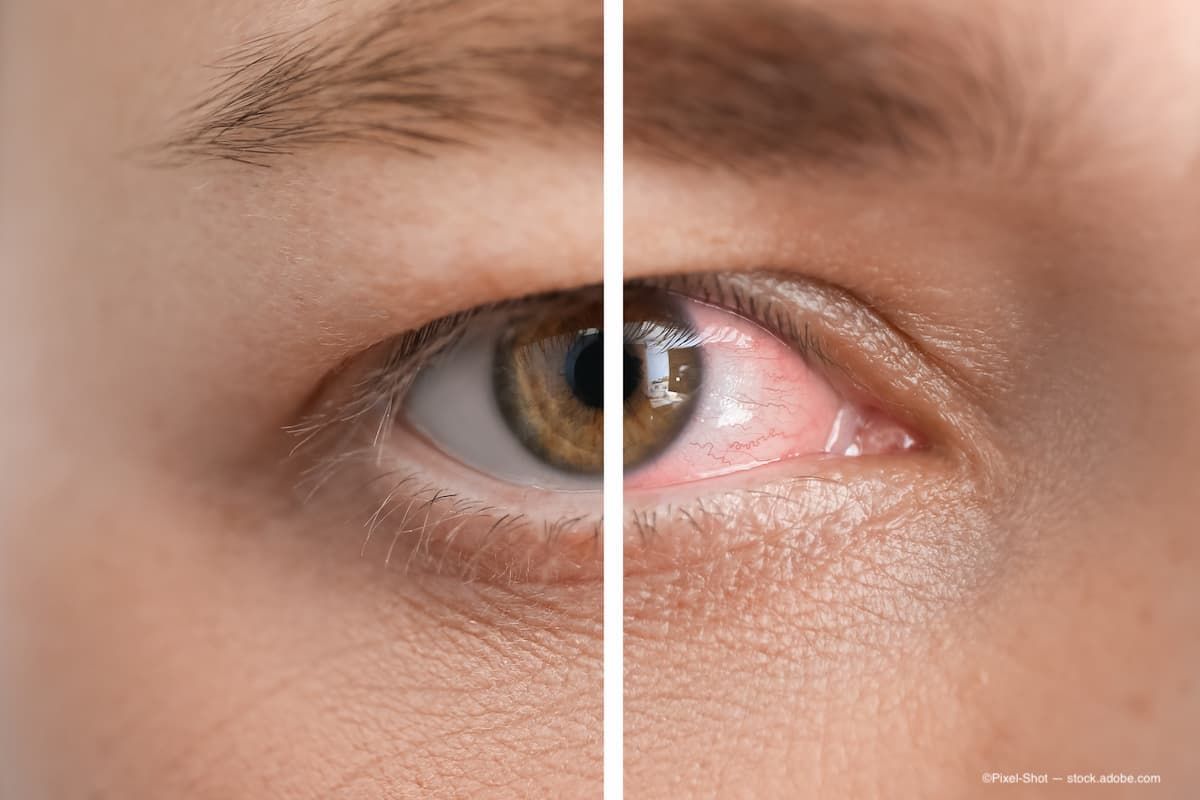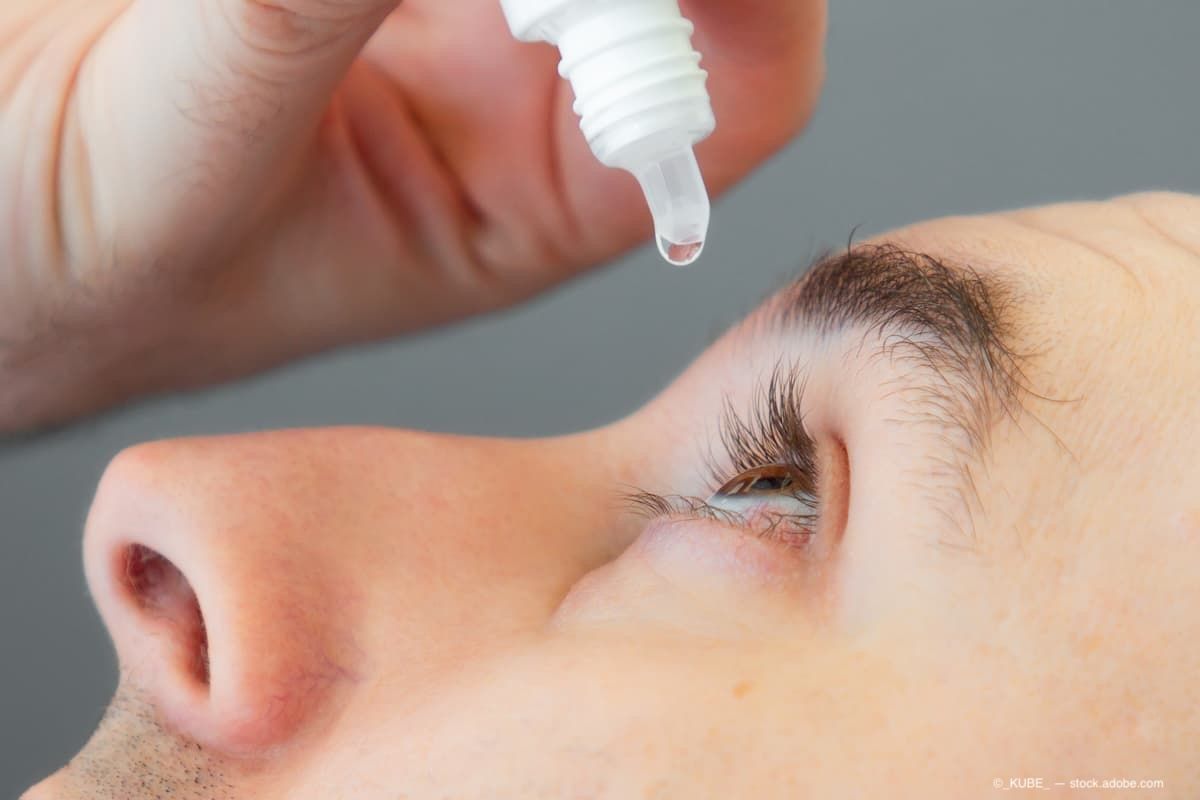Article
HanAll Biopharma announces results from VELOS-3 trial evaluating tanfanercept 0.25% for treatment of dry eye disease
Author(s):
The company noted tanfanercept did not demonstrate statistical significance in either of the primary outcome measures of improvement in central corneal staining score or in improvement in Eye Dryness Score assessed at week 8 in subjects with dry eye disease, compared to vehicle. However, tanfanercept did demonstrate a highly statistically significant improvement on one of the secondary outcome measures, Schirmer testing of tear volume.
(Image Credit: AdobeStock)

HanAll Biopharma Co., Ltd. has announced results from the Phase III VELOS-3 trial evaluating the safety and efficacy of tanfanercept, a novel, topical anti-inflammatory treatment being studied for the treatment of dry eye disease (DED) in subjects diagnosed with moderate to severe DED.
According to the company, the Phase 3 VELOS-3 trial did not demonstrate statistical significance for either of the two primary efficacy endpoints: improvement from baseline in central corneal staining score (CCSS) and in improvement from baseline in Eye Dryness Score via Visual Analogue Scale (VAS) assessed at week 8 in subjects with dry eye disease (DED), relative to vehicle.
The company noted in its news release VELOS-3 did demonstrate statistically significant improvement (p < 0.001) in the secondary efficacy endpoint of unanesthesized Schirmer testing to quantify change from baseline in tear volume in tanfanercept treatment arm relative to vehicle arm assessed at week 8.
Moreover, further analysis of Schirmer data in VELOS-3 revealed that the proportion of subjects whose Schirmer test improved from baseline by 10mm or greater as assessed at week 8 was statistically significant (p < 0.001) in the tanfanercept treated arm (15%) relative to vehicle arm (4%).
Correspondingly, in a post hoc analysis of VELOS-2 data (a previous phase III study), when the subset of subjects that met VELOS-3 inclusion criteria are examined, data from Schirmer testing also meets statistical significance (p < 0.05) for improvement in subjects in the tanfanercept arm relative to subjects in vehicle control arm as assessed at week 8, according to the news release.
It is notable that per the FDA's 2020 Draft Guidance on dry eye drug development, as an acceptable primary efficacy endpoint option, the FDA lists the measurement of a statistically significant difference between the percentage of patients achieving a 10-millimeter increase or more in Schirmer's tear test scores. This is in contrast to one of the other efficacy endpoint options listed by the FDA which includes pursuing not only at least one objective prespecified sign of dry eye but additionally requires at least one subjective prespecified symptom of dry eye.
Overall, tanfanercept was well tolerated and the safety findings from VELOS-3 were consistent with those of the previous studies without any significant new adverse events observed.
Sean Jeong, MD, MBA, CEO of HanAll Biopharma, pointed out the analyses of the Schirmer results for both phase III trials are highly encouraging for the impact it may have for dry eye disease patients and provides a compelling rationale for further development of tanfanercept.
“HanAll intends to continue its evaluation of tanfanercept, and our future clinical program will build on the important learnings from the past 3 studies,” Jeong said in the news release. “Also, HanAll is exploring tanfanercept's further potential at higher concentrations as well as additional indications. We are planning the next study design within 2H2023 and intend to discuss the VELOS-3 data and future plans with the FDA at the earliest opportunity."
The study data will be shared at upcoming scientific meetings.
HanAll Biopharma and Daewoong Pharmaceutical are co-developing tanfanercept therapies and hold global rights for tanfanercept except within Mainland China, Hong Kong and Taiwan.
Tanfanercept is a novel, potentially first-in-class topical anti-inflammatory treatment targeting tumor necrosis factor alpha (TNF-α) for the treatment of DED, co-developed with Daewoong Pharmaceutical. TNF is a major cytokine mediating inflammation in DED. Tanfanercept is a molecularly engineered tumor necrosis factor receptor 1 (TNFR1) fragment with strong affinity for TNF and resistance to degradation by proteinases.
VELOS-3 (NCT05109702) is a US-based multicenter, randomized, double-masked, vehicle-controlled Phase 3 study designed to evaluate the safety and efficacy of tanfanercept 0.25% for the treatment of adults with moderate to severe DED. The two primary outcome measures are change from baseline in Central Corneal Staining Score (CCSS) at 8 weeks and change from baseline in Eye Dryness Score (EDS) Assessed by Visual Analogue Scale at 8 weeks.
VELOS-2 (NCT03846453) is a US-based multicenter, randomized, double-masked, vehicle- controlled Phase 3 study designed to evaluate the safety and efficacy of tanfanercept 0.25% for the treatment of adults with dry eye. The coprimary endpoints are change from baseline in inferior corneal fluorescein staining score to week 8 (Pre- to Post-Ora's CAE ® Dry Eye Challenge Model which utilizes a controlled adverse environment) and change from baseline in ocular discomfort score to week 8 (Pre-CAE).
Newsletter
Don’t miss out—get Ophthalmology Times updates on the latest clinical advancements and expert interviews, straight to your inbox.




